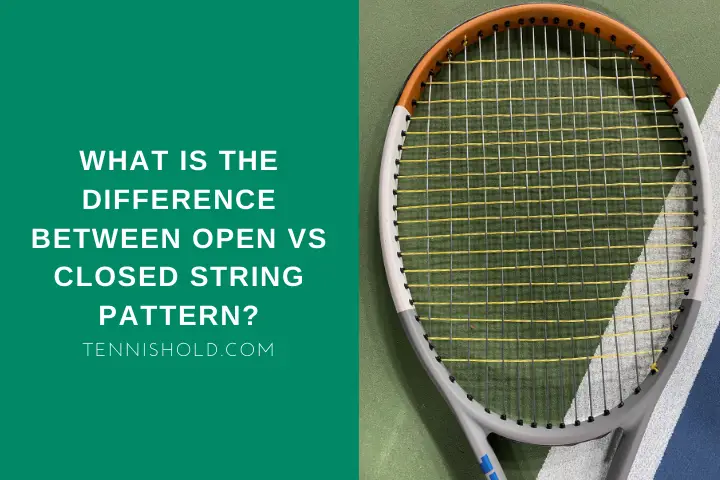Have you ever been browsing rackets on the web and seen figures such as 16×19 and wondered what it means? It might be confusing at first, but it is actually straightforward. So, if you read on, I will be explaining what these figures mean.
What does it mean when people talk about open and closed string patterns?
Open string pattern means that squares between strings are larger. The more open a string pattern, the more spin and power can be generated. The more closed the pattern is, the more controllable the ball is.
Choosing a specific string pattern will not generate more spin or control on its own. It is merely designed to assist you in achieving the outcome you want.
Your game style will also play a role in deciding which string pattern is best. I will talk more about this further.
In this article I will be covering:
- The effect string patterns have on the racket
- The key differences between open and closed string patterns
- The string patterns used by the pros
- The best string pattern for flat hitters
- The best string pattern for topspin
I will be sharing lots of valuable information, so I hope you stick around!
How Does String Pattern Affect A Tennis Racket?
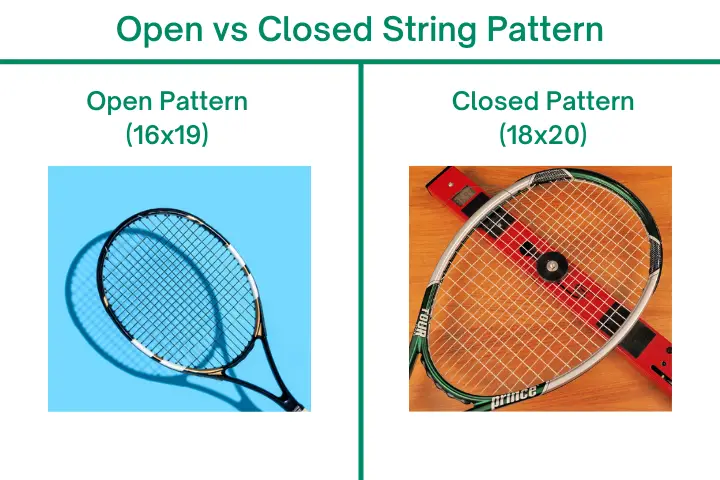
When talking about string patterns, you will see figures like 16×19 or 18×20.
The first figure refers to the number of mains (vertical) in the racket. The second, the number of crosses (horizontal).
The string pattern is not the most crucial element when it comes to tennis rackets. However, it is nonetheless an important consideration.
For our comparison, we will assume that we have two identical rackets. The only difference is one will have an open string pattern and the other closed.
As a general rule, the strings on the racket with the more closed string pattern will last longer. This is because there is less space for the strings to rub against each other.
With an open pattern, the strings will move and rub more, thus weakening quicker.
Have you ever heard about the term gauge?
Gauge refers to the thickness of a tennis string.
Another benefit of a closed string pattern is that it allows you to use thinner strings.
As the pattern allows the strings to last longer, it will preserve thin strings longer. This is because they would not last as long in an open pattern racket.
A racket with a more open string pattern will usually cause less impact on the arm. Also, as the strings are not as close together, the pattern is not as stiff.
With a stiffer pattern, more vibration is felt in the arm.
There are a few rackets on the market that allow you to change the string pattern. For example, the head offers a technology called ASP or Adaptive String Pattern. This allows players to change the grommets on the racket. Thus, by changing the grommets, you could change the string pattern.
In case you wonder, the grommets are the plastic strips that go around the racket frame.
It is the grommets that have the holes for the strings to go through.
Main Differences Between Open and Closed String Patterns
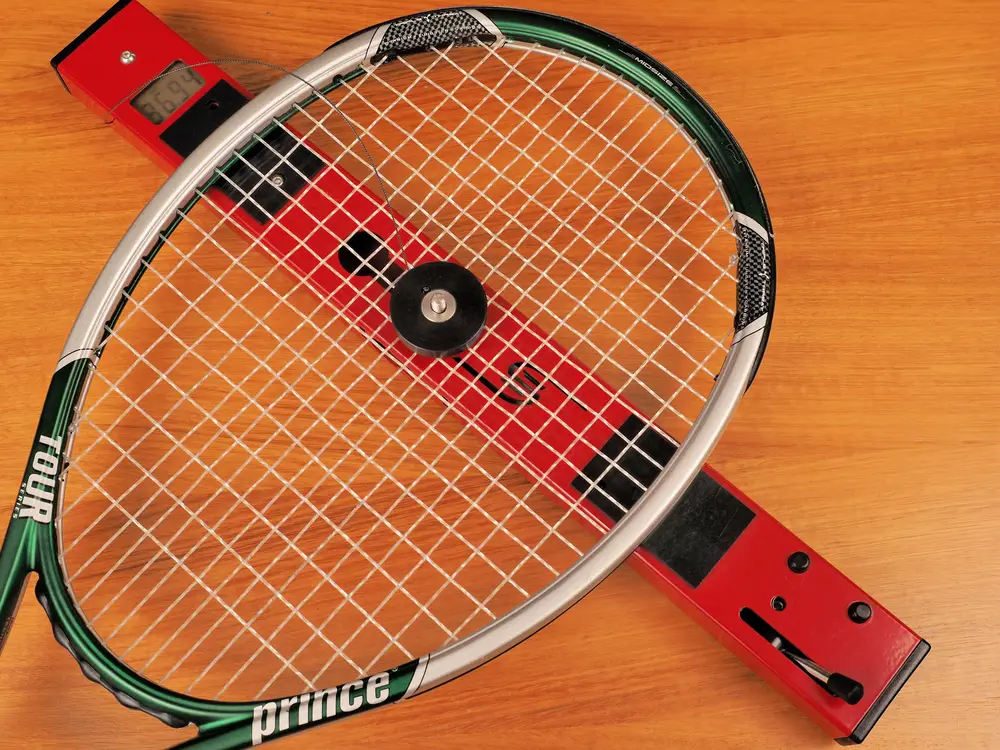
The most noticeable difference is the gap between the strings. In more dense string patterns, the strings are much closer together.
Open string patterns give greater potential for a spin. As there is more space between the strings, it helps them bite into the ball and generate more spin. However, many more arm and wrist actions are needed to create spin when using a closed string pattern.
The greatest benefit of a closed string pattern is that it gives more control. In addition, as you hit with more strings at the contact point, it provides increased stability.
I mentioned earlier that the strings last longer in denser patterns. The main reason for this is that more strings are touching the ball when the racket makes contact.
So naturally, the impact is spread across more strings.
It is worth noting that closed string patterns are gradually becoming less common. When the natural gut was the norm, closed string patterns were used more.
The characteristics of the natural gut meant that players needed a pattern that gave them more control.
The most common closed string pattern used today is 18×20.
Tennis has developed massively over the past 40 years. As the game has evolved, so has the desire for topspin. This is the main reason that there has been a transition towards open string patterns.
Strings in open patterns also lose tension quicker. In closed patterns, the strings are closer together and thus hold the tension for longer.
The more the strings can move within the racket, the quicker they lose tension.
The most common open string pattern you will find today is 16×19.
Just to summarize everything, here is a little table with key differences.
| Open String Pattern | Closed String Pattern |
|---|---|
| Greater spin potential | More control |
| Increased power | Increased string durability |
| Quicker loss of tension | Firmer feel |
What String Pattern Do Pros Use?
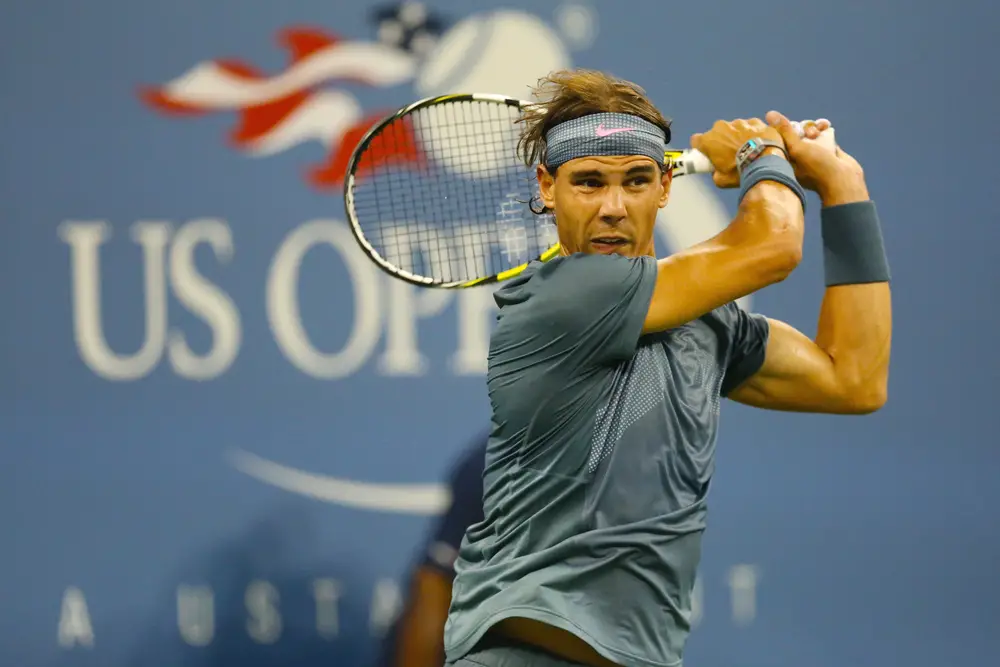
Just like amateurs, pros have different playing styles. Therefore, the string pattern they choose will be influenced by their style, just as it would for you or me.
The list below shows some of the top players on the men’s and women’s side and the string patterns they use.
| Player | String Pattern |
|---|---|
| Novak Djokovic | 18×20 |
| Rafael Nadal | 16×19 |
| Daniil Medvedev | 18×19 |
| Ashleigh Barty | 16×20 |
| Naomi Osaka | 16×19 |
| Simona Halep | 16×19 |
In 2019 (In ATP Finals), Nadal’s average topspin RPM on his forehand was 3050. On his backhand, it was 2400.
Daniil Medvedev recorded an average topspin RPM of 2550 on the forehand and almost 1450 on the backhand.
If you wonder what I am talking about, RPM stands for revolutions per minute. In other words, how many times the ball spins a full circle in the air per minute.
Nadal is a player who generates an incredible amount of topspin when he hits. It is thus little surprise that he has an open string pattern.
Medvedev, on the other hand, hits much flatter. You can see that their string patterns reflect their in-court strategy.
What Pattern Should Flat Hitters Select?
As a general rule, flat hitters are better off going for a more closed string pattern. We can also see that this is the case at the pro level with the Nadal-Medvedev comparison.
The main reason that flat hitters are better going for closed string patterns is that they offer more control. As more strings contact the ball, it is easier to place the ball where you intend to.
Players like Medvedev need a more closed string pattern to compensate for the power that is coming from their aggressive flat shots.
Players like Nadal, who generate a huge amount of topspin, have less need for control. This is because the topspin acts as a control mechanism of its own, but I will talk about it in the future.
What Pattern Is Best For Topspin?
If you are looking to generate more topspin, you are definitely better off going for an open string pattern.
The bigger gaps between the strings make it easier for them to bite into the ball. This then helps when your racket grips the ball as you apply topspin.
This being said, 16×19 is the most common pattern. This is because it opens the strings enough to generate lots of topspin but without neglecting control completely.
A new trend has recently taken off. This trend involves stringing rackets with unorthodox patterns. One of the most common of these patterns is 10×10. It gives extreme topspin but almost no control due to its ridiculously open pattern.
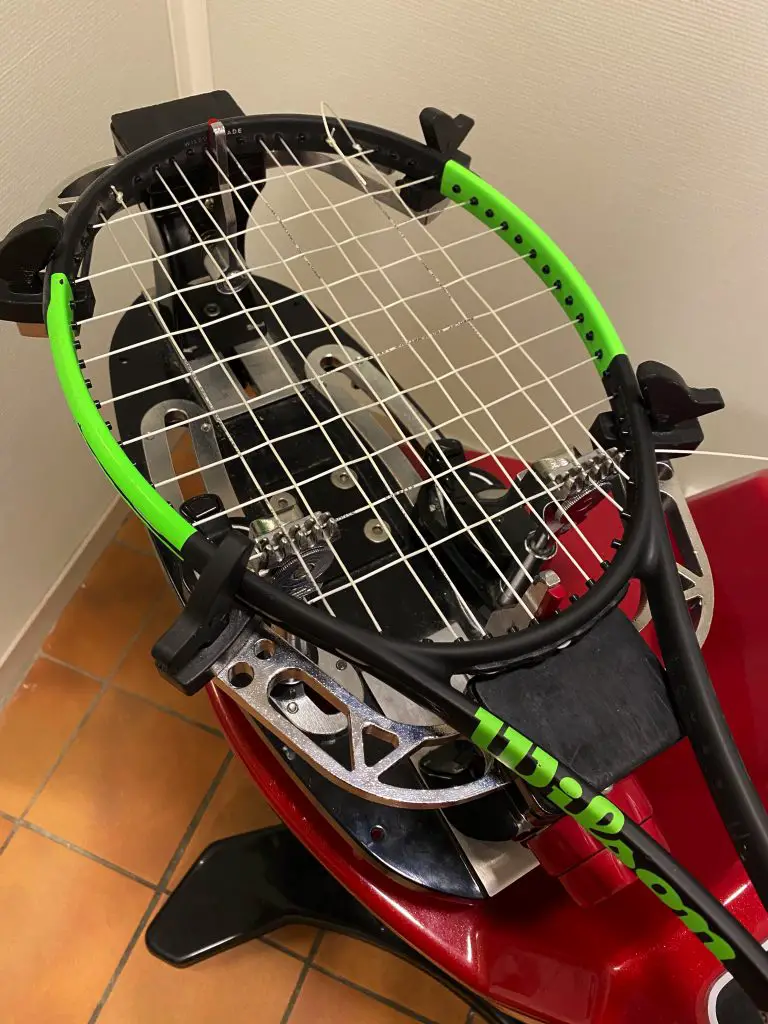
The picture above is one that I strung. The gaps are big enough to fit thick whiteboard pens through.
When playing with it, I found that I would hit extreme topspin for one or two shots. Then all of a sudden, the ball would fly up uncontrollably. The sweet spot is tiny.
It can be fun playing around with open string patterns like this. However, I would nonetheless recommend sticking to more orthodox patterns if playing a serious match.
Final Words
String patterns are an important consideration to make when choosing a racket. However, the decision should be based not just on your style but also on the type of shot you want to hit.
There is no one-size-fits-all when it comes to string patterns. Just because 18×20 works for Djokovic, it doesn’t mean it will work for you
What string pattern do you use at the moment? Do you notice a big difference when switching between string patterns?

